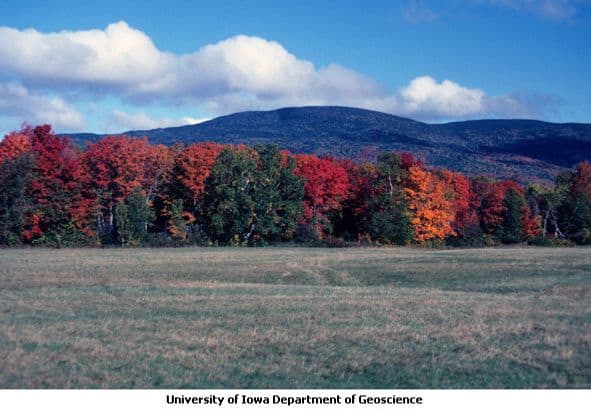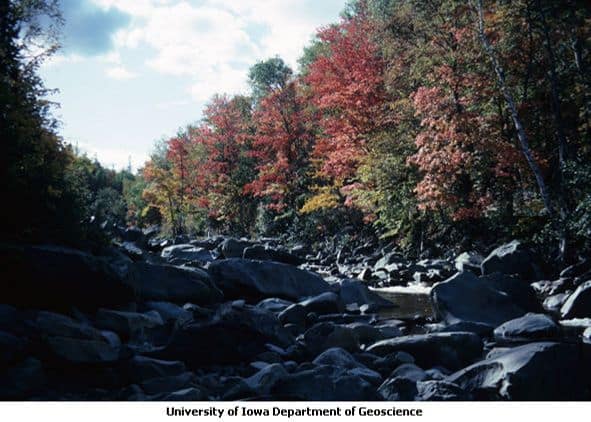The autumnal equinox occurred on Tuesday, September 22 this year. This marks the turning point when the sun passes over the Earth’s equator, and the hours of daylight and night are close to equal. From this point on, the hours of daylight will soon begin decreasing each day until the shortest day of the year occurs on the winter solstice. One of the most beautiful effects of the shorter days occurs when deciduous trees prepare for winter by taking on the brilliant colors of red, orange, yellow, and purple. According to the Iowa DNR’s Fall Color Report, the best viewing time for fall colors in central Iowa begins the first week of October.
When deciduous trees stop producing chlorophyll to get ready for winter, their leaves cease being green and turn to red, yellow, orange, or purple. InChemistry’s “Why Do Leaves Change Color in the Fall?” explains the chemical compounds that are responsible for this color change. Red and purple colors are due to anthocyanins present in the leaves, while yellow and orange colors are due to carotenoids and flavonoids.
In Smithsonian Magazine, you can watch a two-minute time-lapse video showing different leaves changing color, a process that would normally happen slowly over several days. It is interesting to watch the video since the process of a leaf turning orange or yellow is different than when a leaf turns red or purple.
If you’re interested in seeking out fall colors, you can use the UI Trees web application to find maples, oaks, dogwoods, and other deciduous trees on campus. You can also view beautiful fall color displays that have been captured in the Iowa Digital Library’s Geoscience Slides collection!

